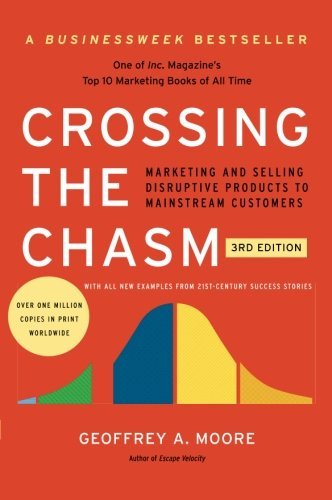- Stars:
- Pages: 366
- Time to Read: 10 hours
- Authors: Geoffrey Moore
- Type of Book: Entrepreneurship
TL;DR
Soon-to-be, a co-founder? Crossing the Chasm deserves a read. The book is extremely helpful to anyone who is willing to become a tech entrepreneur or is planning to establish their own company.
Written by Geoffrey A. Moore, the book diligently serves the purpose of bridging the Chasm, which is a very likely scenario in today’s approach to the Tech Adoption Lifecycle. Through the book, two main chasms are clearly illustrated.
The first is the one that takes place between early adopters and the early majority. Secondly, the Chasm between the early majority vs the late majority. He explains how every market has its own dynamics and set of flows that execute respectively.
What is the book about?
Crossing the Chasm is an upper-edge blueprint for tech startups working on their marketing strategies. This blueprint helps them to achieve the initial traction they are learning towards, followed by finally making a remarkable impact in the market.
The primary idea that the book addresses is aligned around the technology adoption lifecycle. The Chasm is defined as the huge gap that exists between early adopters and the early majority.
The book also explains the familiar way to cross the Chasm, and that is to target a specific niche in the beginning. This is the only way to surpass the vast Chasm that exists between the two groups.
The idea behind “positioning” is also well-understood in this book. For instance, if you hear “Tesla”, the few attributes that align altogether are car, high-end, or expensive. This is what positioning means.
Key Takeaways!
There is so much in-depth that the book addresses; here are the top three takeaways from the book.
- You need to first understand your niche and then progress further on it.
- The book attends to the gap that takes place between early adopters and the pragmatic majority.
- Become a market leader by establishing a strong claim in the desired niche.
The other key learning from the book is the “Whole Product Concept”, which is an idea shared by Theodore Levitt. The concept explains the gap that exists between the promises made to the customer during marketing. The check here is to make sure the promise is fulfilled by the product to its customers.
Worth the Read?
The book highlights several examples to explain the strategy to the readers. Apart from entirely focusing on niching down, he has also quite emphasized the way to quit offering custom work and instead focus solely on building your product.
If you are someone who aspires to be in the high-tech industry, this book could be for you. Many business owners can fetch a lot of common twigs from the book that will help them reinforce the concepts.
The book is to the point, concise, and competent. With plenty of opinions and instructions that are put forth, there are ample pieces of evidence and reasons that back every theory to make it an outstanding experience for the users.
Join to get sneak peek into what's happening
I write about books, experiences, product, UX, EdTech, early stage growth, validation – mostly tech. Subscribe if these topics interest you. Once every 15 days emailer. I promise – No spam. (I am known for it otherwise) 😉




